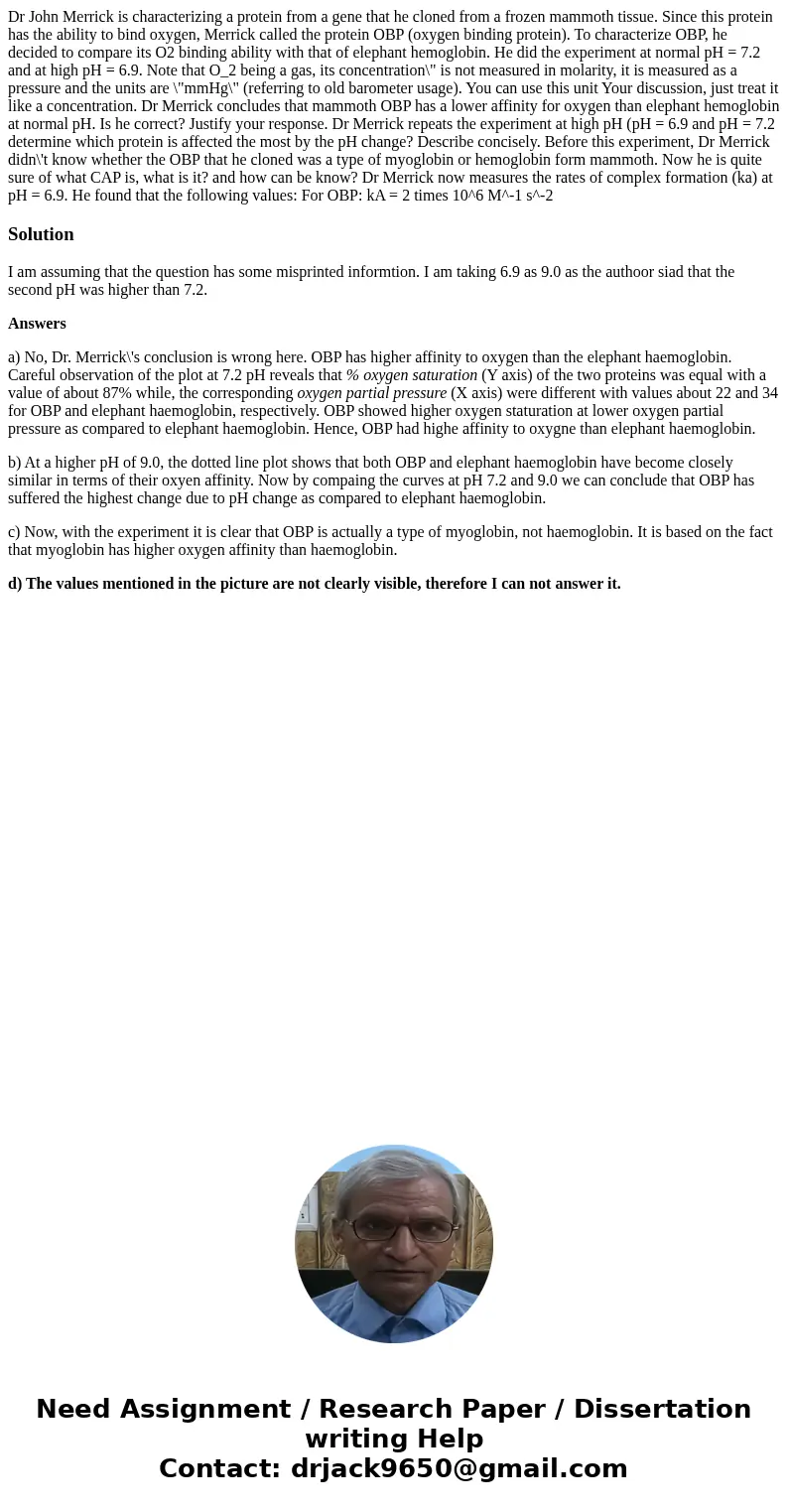Dr John Merrick is characterizing a protein from a gene that
Solution
I am assuming that the question has some misprinted informtion. I am taking 6.9 as 9.0 as the authoor siad that the second pH was higher than 7.2.
Answers
a) No, Dr. Merrick\'s conclusion is wrong here. OBP has higher affinity to oxygen than the elephant haemoglobin. Careful observation of the plot at 7.2 pH reveals that % oxygen saturation (Y axis) of the two proteins was equal with a value of about 87% while, the corresponding oxygen partial pressure (X axis) were different with values about 22 and 34 for OBP and elephant haemoglobin, respectively. OBP showed higher oxygen staturation at lower oxygen partial pressure as compared to elephant haemoglobin. Hence, OBP had highe affinity to oxygne than elephant haemoglobin.
b) At a higher pH of 9.0, the dotted line plot shows that both OBP and elephant haemoglobin have become closely similar in terms of their oxyen affinity. Now by compaing the curves at pH 7.2 and 9.0 we can conclude that OBP has suffered the highest change due to pH change as compared to elephant haemoglobin.
c) Now, with the experiment it is clear that OBP is actually a type of myoglobin, not haemoglobin. It is based on the fact that myoglobin has higher oxygen affinity than haemoglobin.
d) The values mentioned in the picture are not clearly visible, therefore I can not answer it.

 Homework Sourse
Homework Sourse